WASHINGTON, DC—Viewing the art of Ai Weiwei and understanding the concepts behind his work is an eye-opening experience. The renowned contemporary artist and human rights activist uses his art for change, commenting on social issues and the actions of the Chinese government. Currently, there is a rare opportunity to see the Beijing-based artist’s work at several U.S. venues in Washington, D.C. and New York.
The most extensive survey is at the Smithsonian’s Hirshhorn Museum, where “According to What?” explores Ai’s contributions to the design of the “Bird’s Nest” stadium for the 2008 Beijing Olympics, the decade he spent in New York City, and his investigation of the 2008 Sichuan earthquake victims. A wide-ranging presentation, the exhibit features photography, sculpture, and audio and video, as well as site-specific installations. It occupies the entire second floor gallery, overflows to the third floor and includes the artist’s “Forever” bike sculpture in the museum’s lobby.

Detail of “Colored Vases” 2007-2010 (Han dynasty (260 BCE-220 CE)vases and industrial paint).
The visual and symbolic impact of Ai’s installations is rooted in his use of quantity and culturally relevant materials (wood salvaged from dismantled temples, ancient urns and stools, rebar from earthquake ravaged buildings, tea to form tea houses). Quotes from the artist are on display throughout “According to What?” It is as though the artist is personally guiding you through the exhibition.
Beside a photo of him being taken into police custody, Ai states: “For artists and intellectuals today, what is most needed is to be clear about social responsibility, because that is what most people automatically give up. Just to protect yourself as an individual is very political. You don’t have to march on Tiananmen, but you do have to be clear-minded, to find your own means of expression.”
“According to What?” is on view at the Hirshhorn from Oct. 7, 2012 to Feb. 24, 2013.
Also on View
Ai’s “Circle of Animals/Zodiac Heads” is also on display on the Hirshhorn’s plaza (April 19, 2012 to February 24, 2013) and “Fragments,” a structural installation composed of beams from dismantled Qing dynasty temples, is on view at the Smithsonian’s Sackler Gallery (May 12, 2012 to April 7, 2013). In addition, Mary Boone Gallery in New York is exhibiting Ai’s work in its Chelsea space and at its Fifth Avenue venue (both Oct. 13 to Dec. 21, 2012).
All photos © Arts Observer

“Snake Ceiling,” 2009 (backpacks).
About 90,000 people were missing after the 2008 Sichuan earthquake including many young students killed in collapsed schools. The work on the ceiling resembles a giant snake composed of various sized backpacks representing children in elementary through junior high school, “laid out as a requiem for the souls of those who perished in the disaster.”

Photographic images papering walls: “Beijing’s 2008 Olympic Stadium,” 2005-08 (inkjet prints).
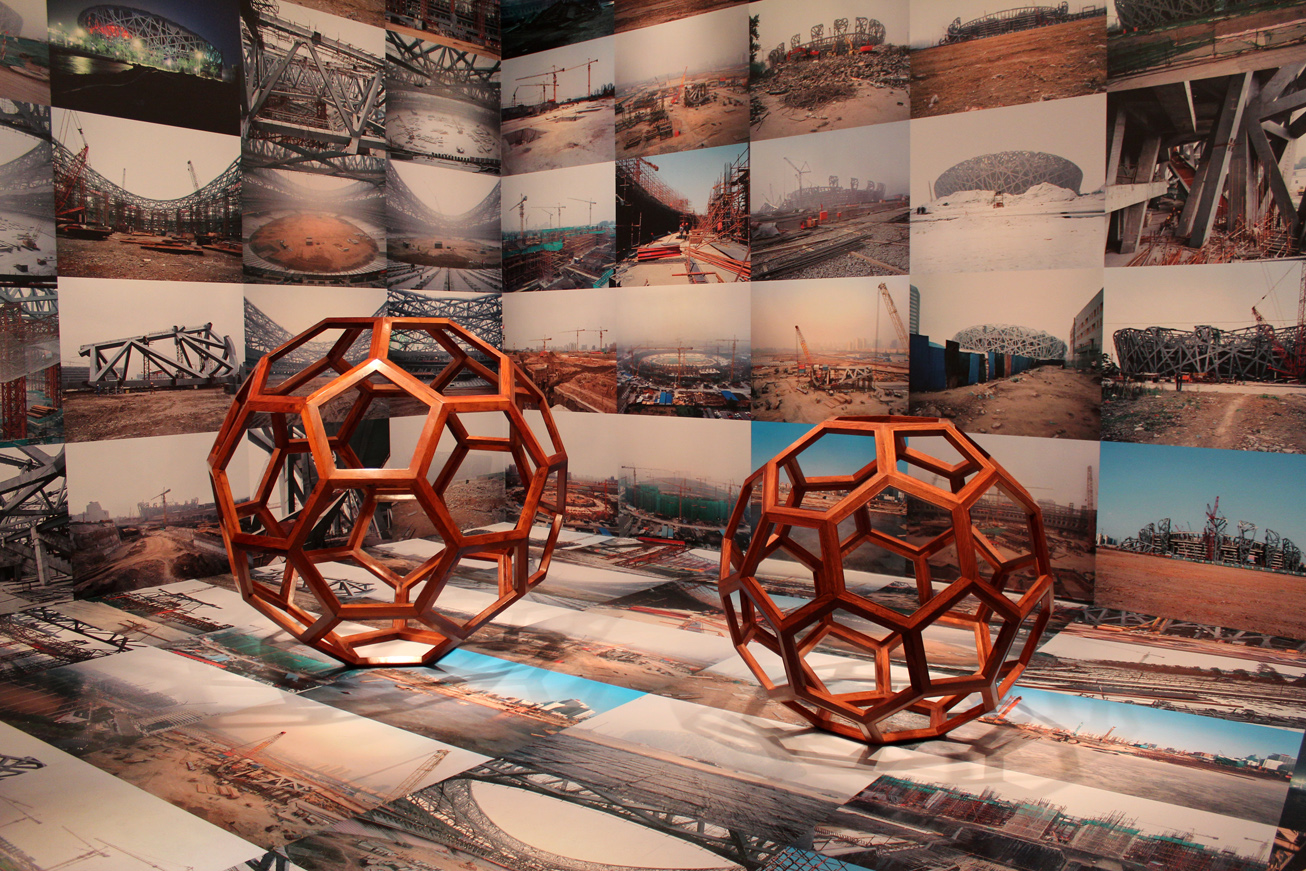
“Divina Proportione,” 2006 and “F Size,” 2011 (both huali wood).
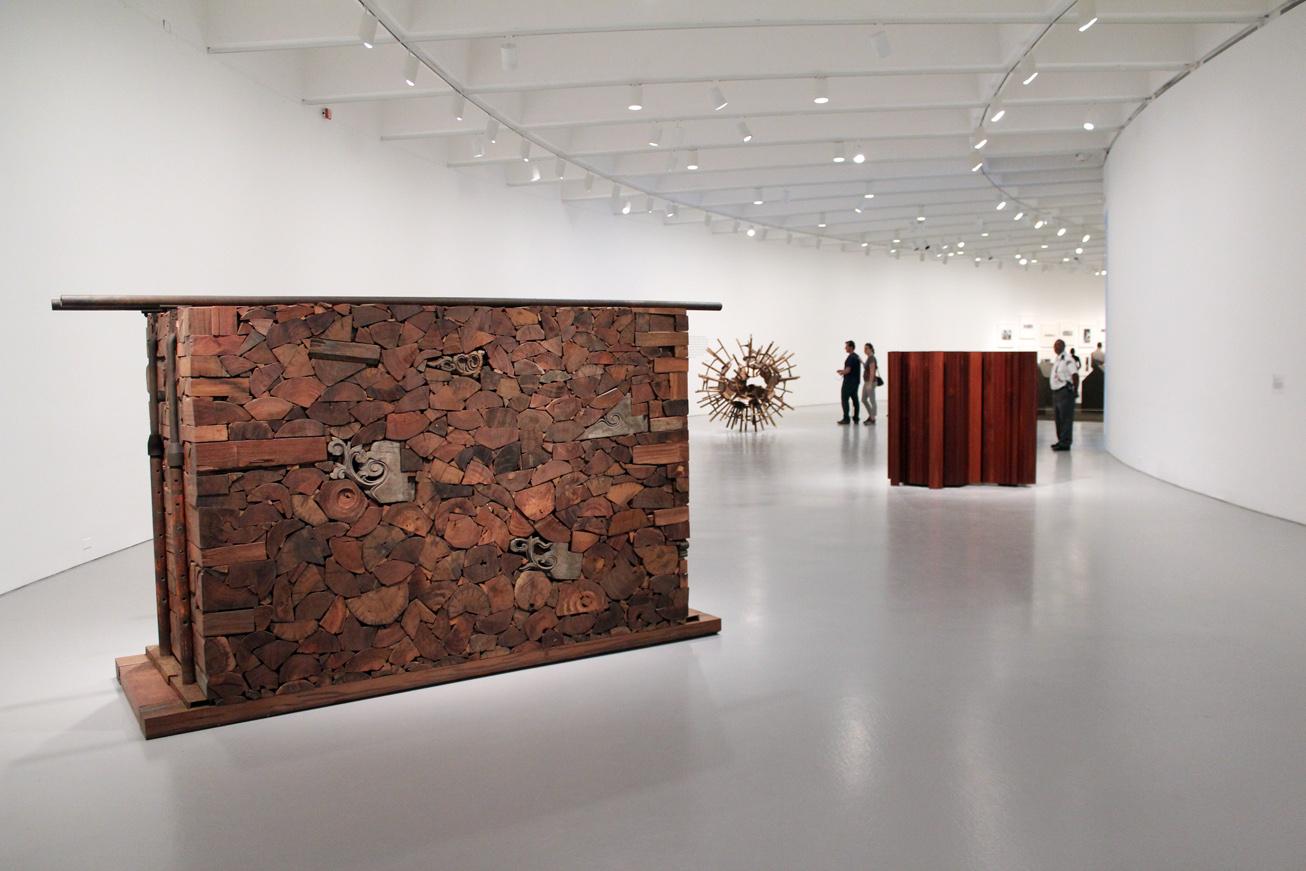
Left foreground, “Kippe,” 2006 (tieli wood (iron wood) from dismantled temples of the Qing dynasty (1644-1911)and iron parallel bars).
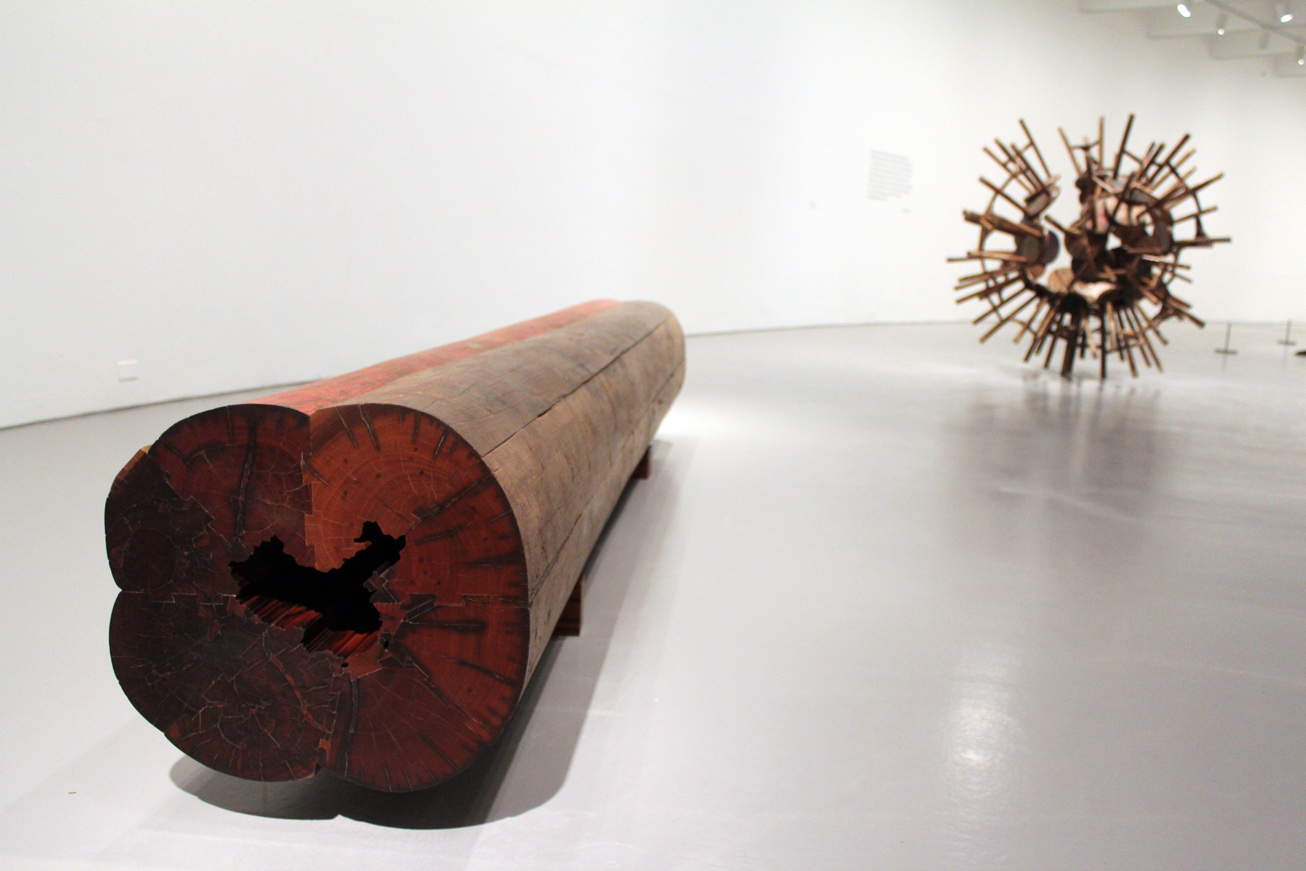
“China Log,” 2005 (tieli wood (iron wood) from dismantled temples of the Qing dynasty). The hollow center is shaped like the map of China.
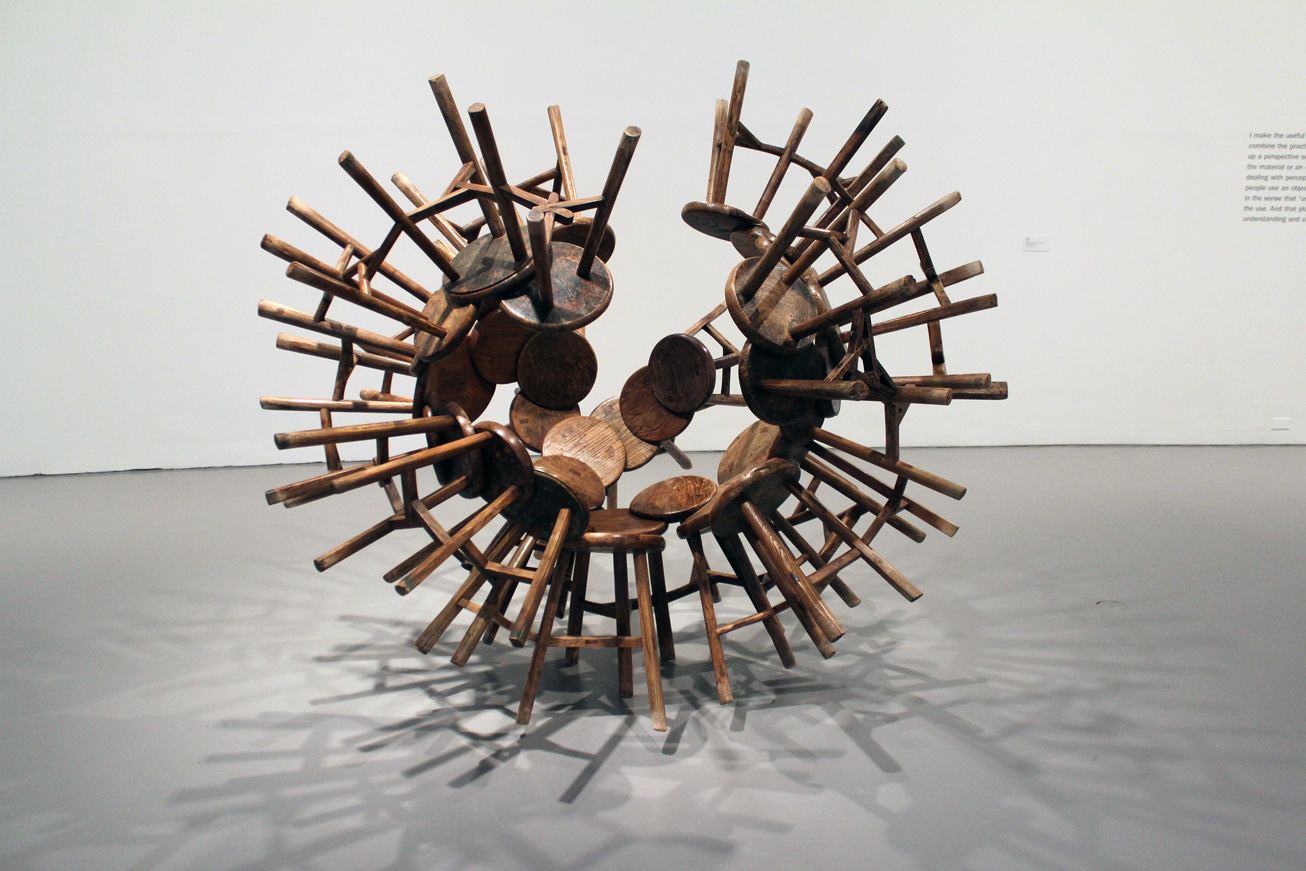
“Grapes,” 2010 (40 antique wooden stools from the Qing dynasty).

“Moon Chest,” 2008 (7 chests in huali wood).
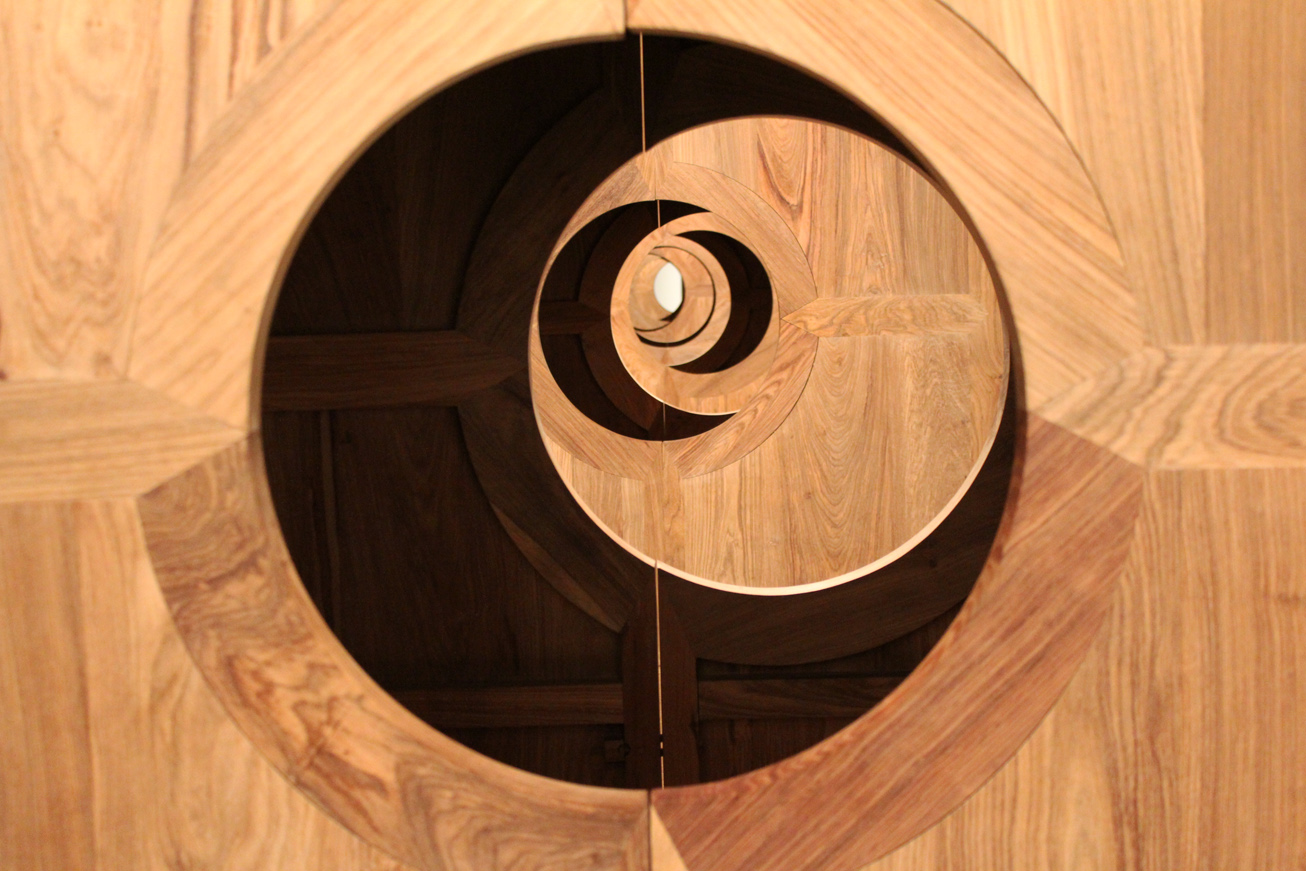
Detail of “Moon Chest.” The entire work consists of 81 chests. The openings align creating the effect of all of every phase of the moon.
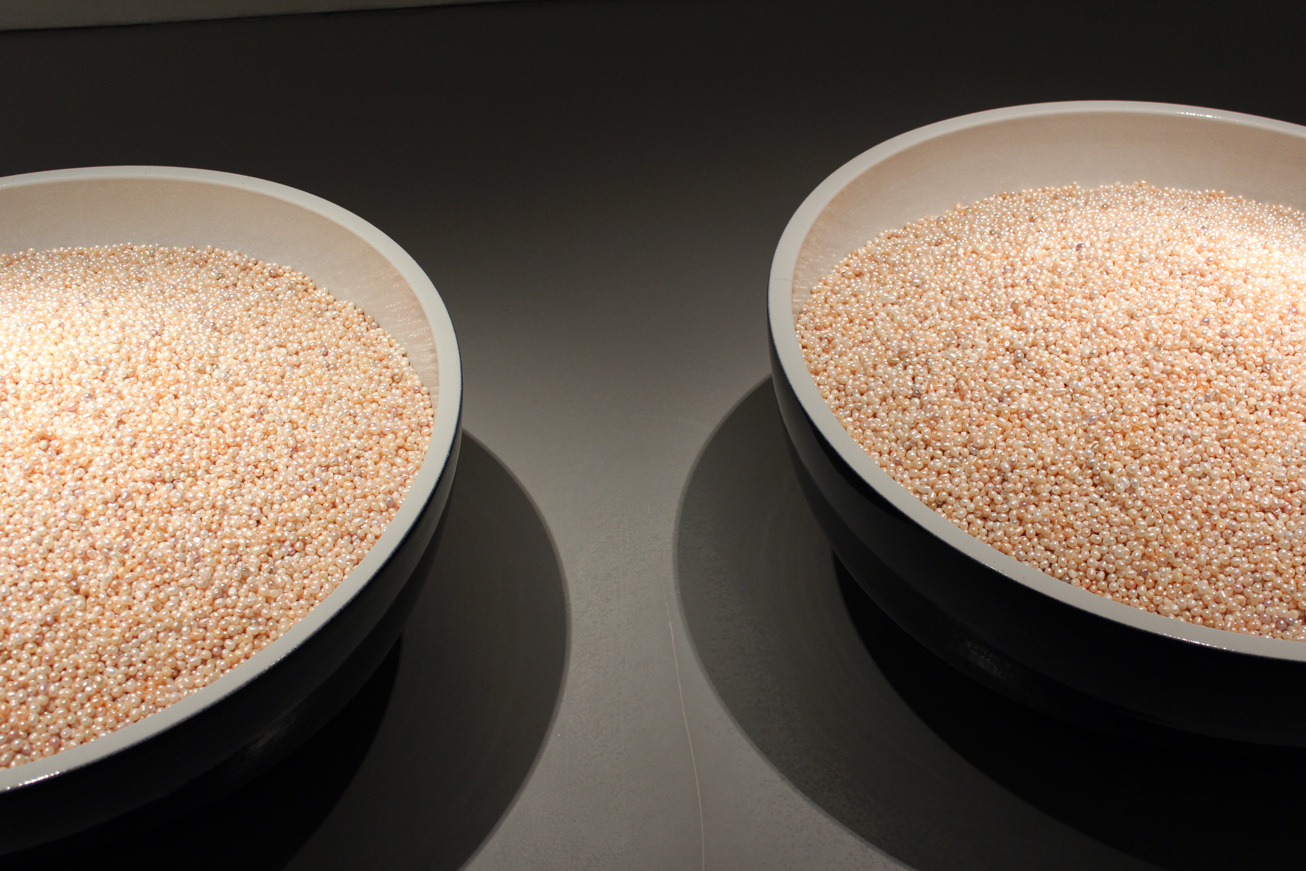
Detail of “Bowls of Pearls,” 2006 (porcelain bowls and freshwater pearls).

“Ai Weiwei in the elevator when taken into custody by police,” 2009 (inkjet print).

Detail of “He Xie (river crab),” 2010- (porcelain crabs).

Installation view of “He Xie (river crab).”

“Straight,” 2008-12 (38 tons of steel rebar). The rebar is recovered from schools that collapsed in the 2008 Sichuan earthquake.
According to the exhibit copy: “The orderly arrangement of rebar evokes a Minimalist artistic aesthetic, but the large divide in the piece is reminiscent of both a ground fissure and of a gulf between values.”
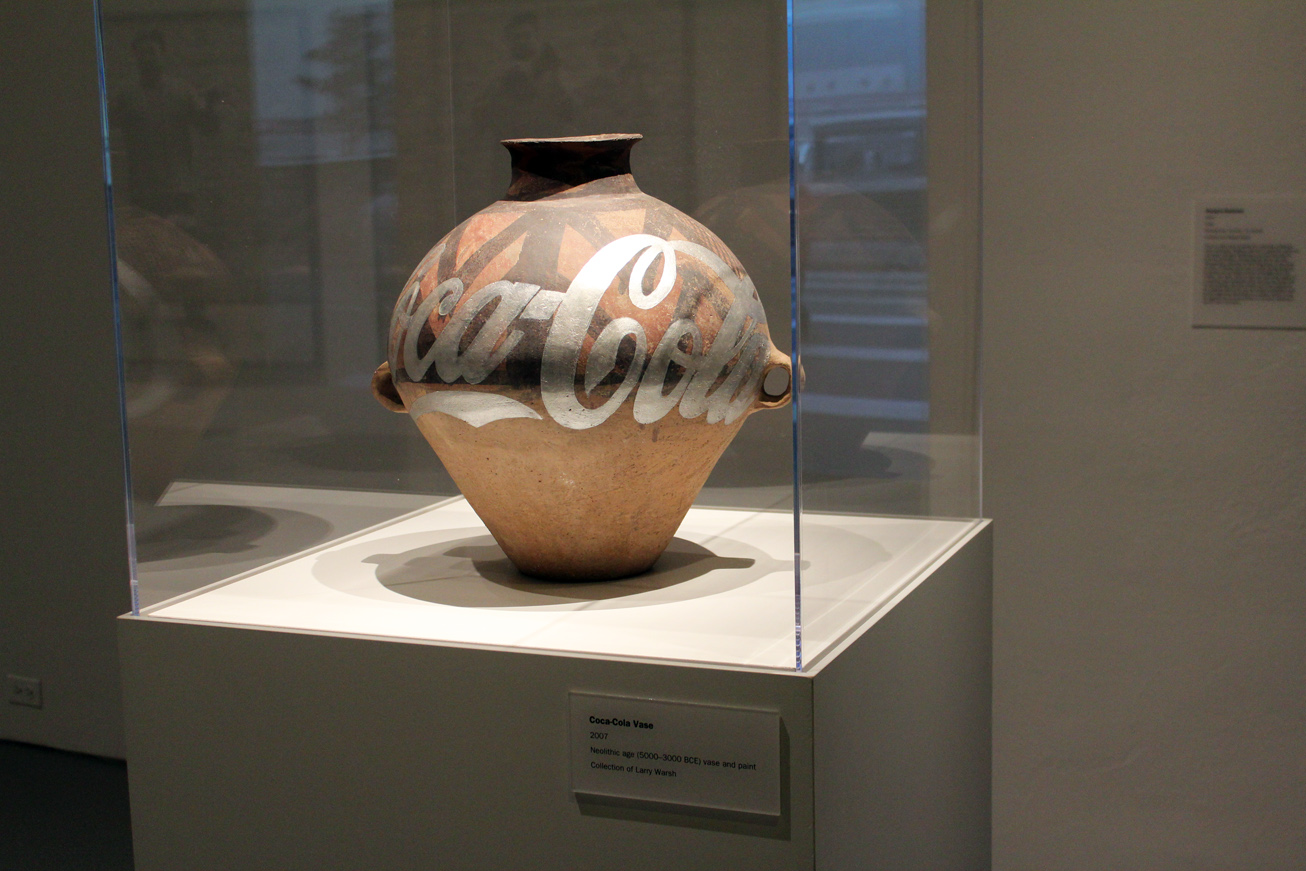
“Coca-Cola Vase,” 2007 (Neolithic age vase (5000-3000 BCE) with paint).

“Tea House,” 2011 (compressed tea).

“Cuba Light,” 2008 (glass crystals, lights and metal).
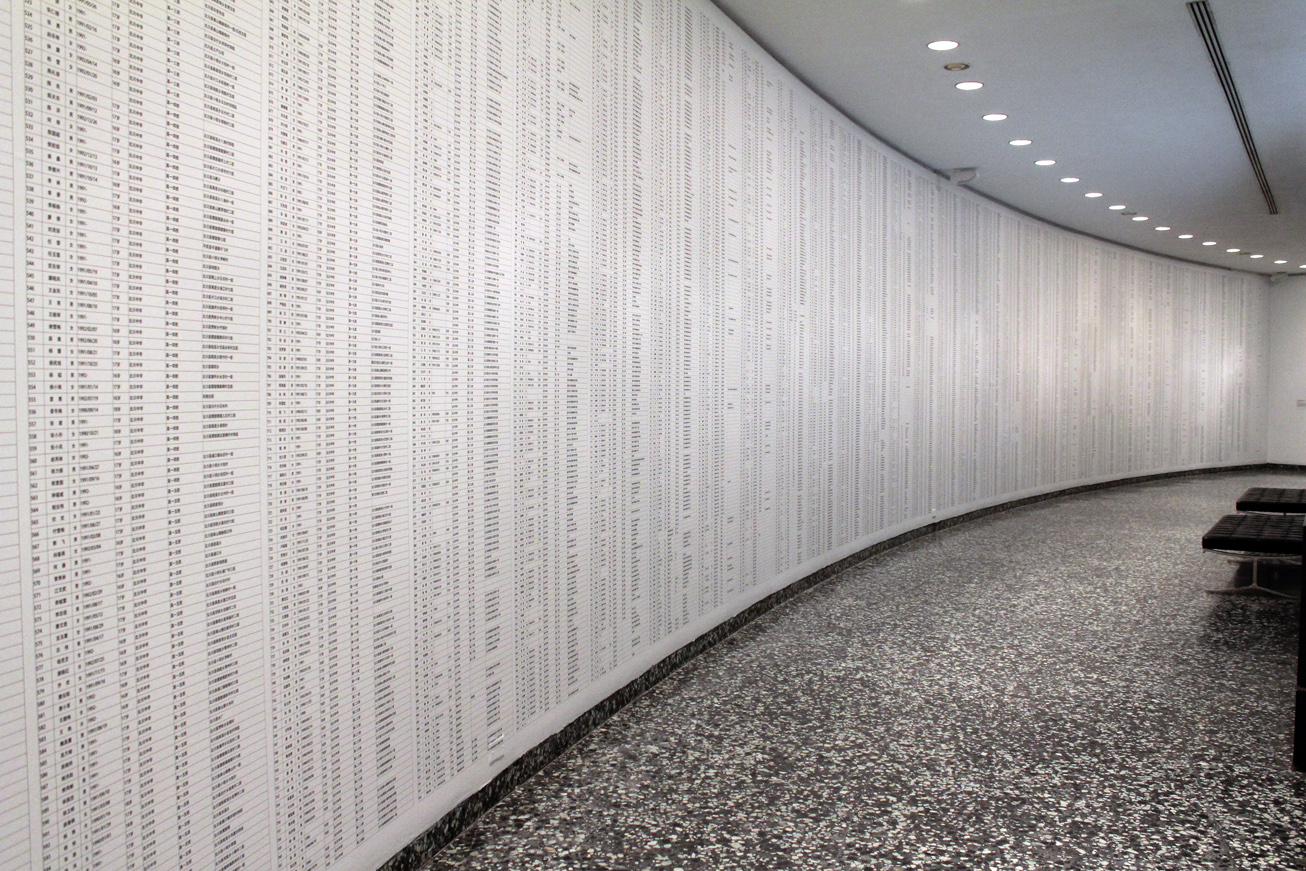
An entire wall features the “Names of the Student Earthquake Victims Found by the Citizens’ Investigation,” 2008-11 (injket print).
Ai created the investigation to document the students who died in the 2008 Sichuan earthquake. The list includes the name, date of birth, class and sex of more than 5,000 students. The work includes “Remembrance” 2010, a 3 hour and 41 minute recording reciting the names of the students killed in the earthquake.
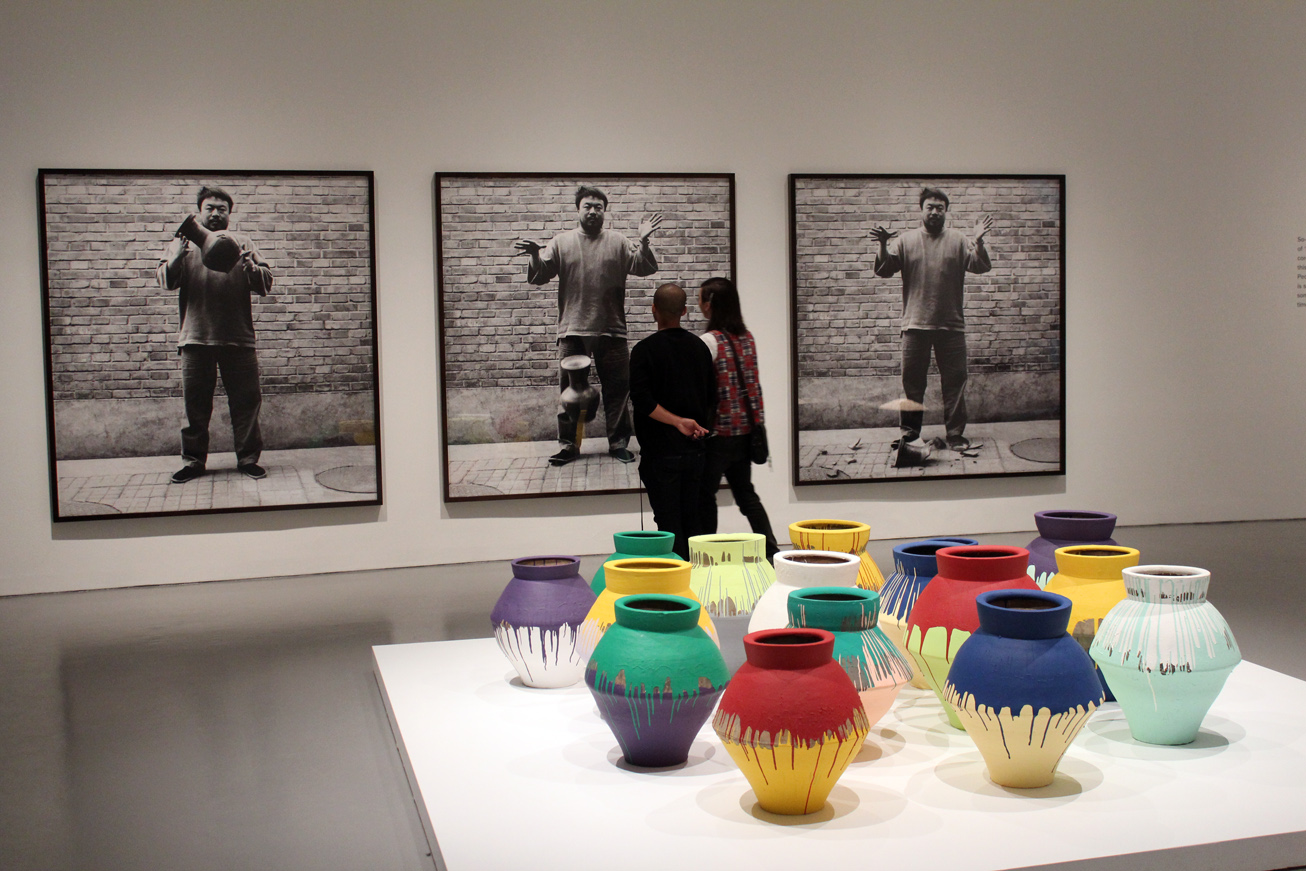
“Dropping a Han Dynasty Urn,” 1995/2009 (triptych, lambda prints) and “Colored Vases,” 2007-2010 (Han dynasty (260 BCE-220 CE) vases and industrial paint).
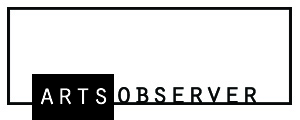
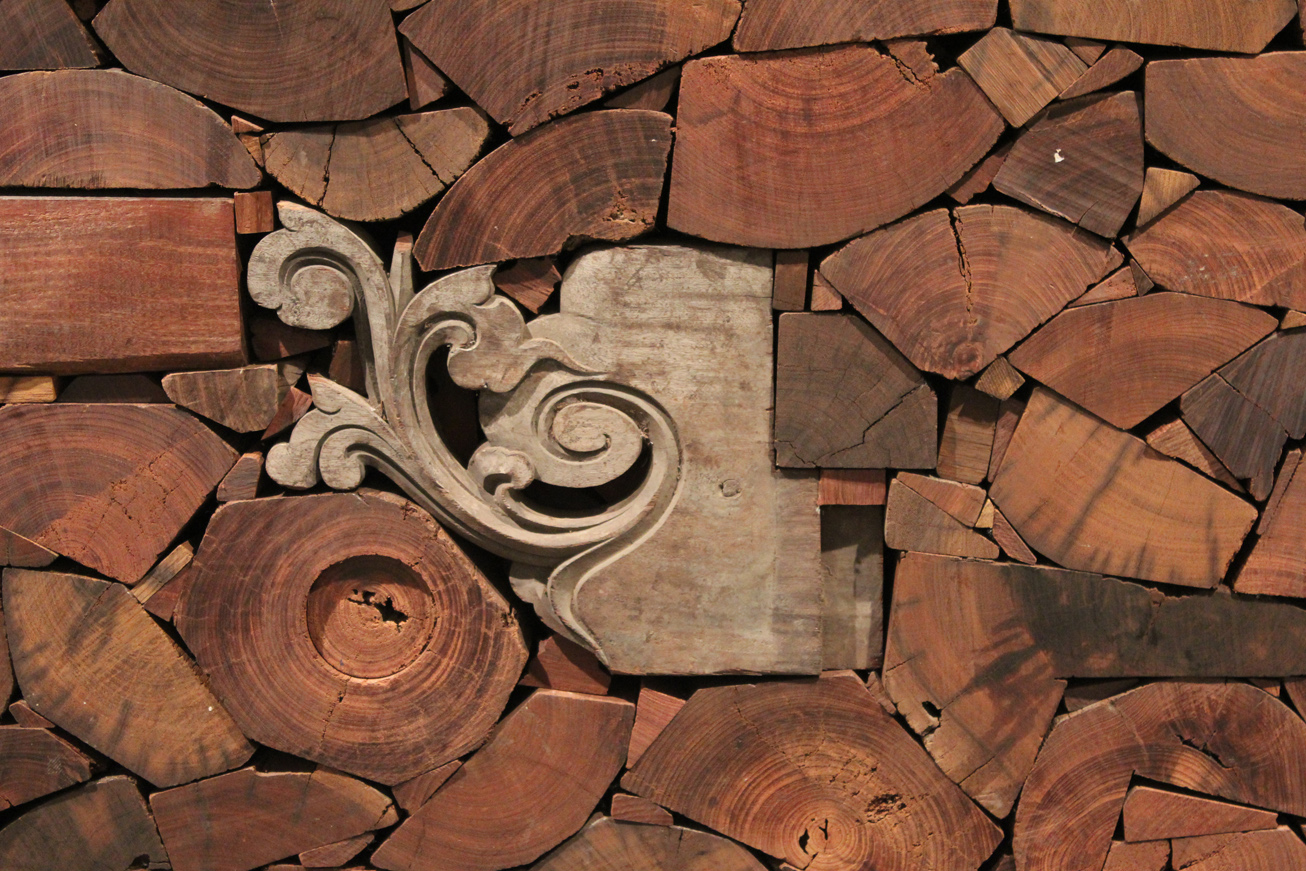




[…] © artsobserver […]